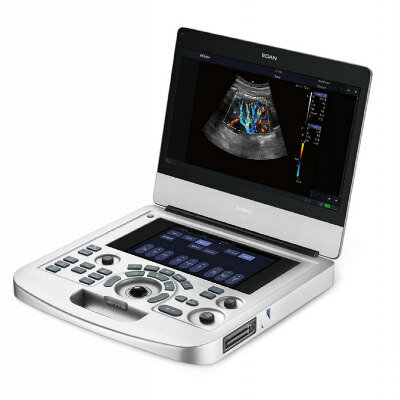New Cloud Ecosystem Targets Healthcare Industry
|
By MedImaging International staff writers Posted on 14 Dec 2015 |
GE Healthcare (GE; Little Chalfont, United Kingdom) has unveiled a Health Cloud and apps that are designed exclusively to connect medical imaging with analytics.
The GE cloud ecosystem will connect to more than 500,000 GE imaging machines, shifting image post-processing from on-site machines to the Cloud, where three-dimensional (3D) images can be viewed on multiple devices both inside and outside the hospital setting. Radiologists and clinicians will link with the ecosystem using cloud-based apps that can connect them in real time with imaging, data, analytics and insights, as well as with other clinicians, thus promoting collaboration across care pathways and multidisciplinary teams.
Apps available will include Centricity Cloud Advanced Visualization, Centricity Multi-Disciplinary Team Virtual Meeting, Centricity Case Exchange, and Centricity Image Access. The apps will be delivered on a subscription basis, allowing hospitals and health systems an on-demand, flexible computing power that can be scaled up or down on a variable cost model that will allow them to control computing expenses. The cloud ecosystem will also include a software development toolkit (SDK), and its app store will host and promote new software solutions.
“Healthcare devices are generating enormous amounts of data, and that data is expected to increase 50 fold by 2020. The GE Health Cloud can help unlock the value of this data quickly and seamlessly for better patient care,” said John Flannery, president of GE Healthcare. “The GE Health Cloud will help clinicians turn data into insights, and insights into tangible actions for decision-makers to drive better outcomes.”
“Our new apps will bring incredible computing and mobility power to radiologists and clinicians,” said Jan De Witte, president of IT at GE Healthcare. “By enhancing radiologists' speed and confidence through the apps, we can help improve their ability to collaborate with referring clinicians inside and outside the hospital.”
The apps are being developed as part of a partnership with the University of Pittsburgh Medical Center (UPMC; PA, USA) in a joint venture known as Omnyx. The Health Cloud and apps will also be open for development by third parties, healthcare providers, and academic institutions, in a bid to attract independent software vendors (ISVs) to develop their apps in the new cloud ecosystem.
Related Links:
GE Healthcare
University of Pittsburgh Medical Center
The GE cloud ecosystem will connect to more than 500,000 GE imaging machines, shifting image post-processing from on-site machines to the Cloud, where three-dimensional (3D) images can be viewed on multiple devices both inside and outside the hospital setting. Radiologists and clinicians will link with the ecosystem using cloud-based apps that can connect them in real time with imaging, data, analytics and insights, as well as with other clinicians, thus promoting collaboration across care pathways and multidisciplinary teams.
Apps available will include Centricity Cloud Advanced Visualization, Centricity Multi-Disciplinary Team Virtual Meeting, Centricity Case Exchange, and Centricity Image Access. The apps will be delivered on a subscription basis, allowing hospitals and health systems an on-demand, flexible computing power that can be scaled up or down on a variable cost model that will allow them to control computing expenses. The cloud ecosystem will also include a software development toolkit (SDK), and its app store will host and promote new software solutions.
“Healthcare devices are generating enormous amounts of data, and that data is expected to increase 50 fold by 2020. The GE Health Cloud can help unlock the value of this data quickly and seamlessly for better patient care,” said John Flannery, president of GE Healthcare. “The GE Health Cloud will help clinicians turn data into insights, and insights into tangible actions for decision-makers to drive better outcomes.”
“Our new apps will bring incredible computing and mobility power to radiologists and clinicians,” said Jan De Witte, president of IT at GE Healthcare. “By enhancing radiologists' speed and confidence through the apps, we can help improve their ability to collaborate with referring clinicians inside and outside the hospital.”
The apps are being developed as part of a partnership with the University of Pittsburgh Medical Center (UPMC; PA, USA) in a joint venture known as Omnyx. The Health Cloud and apps will also be open for development by third parties, healthcare providers, and academic institutions, in a bid to attract independent software vendors (ISVs) to develop their apps in the new cloud ecosystem.
Related Links:
GE Healthcare
University of Pittsburgh Medical Center
Latest Imaging IT News
- New Google Cloud Medical Imaging Suite Makes Imaging Healthcare Data More Accessible
- Global AI in Medical Diagnostics Market to Be Driven by Demand for Image Recognition in Radiology
- AI-Based Mammography Triage Software Helps Dramatically Improve Interpretation Process
- Artificial Intelligence (AI) Program Accurately Predicts Lung Cancer Risk from CT Images
- Image Management Platform Streamlines Treatment Plans
- AI-Based Technology for Ultrasound Image Analysis Receives FDA Approval
- AI Technology for Detecting Breast Cancer Receives CE Mark Approval
- Digital Pathology Software Improves Workflow Efficiency
- Patient-Centric Portal Facilitates Direct Imaging Access
- New Workstation Supports Customer-Driven Imaging Workflow
Channels
Radiography
view channel
Novel Breast Imaging System Proves As Effective As Mammography
Breast cancer remains the most frequently diagnosed cancer among women. It is projected that one in eight women will be diagnosed with breast cancer during her lifetime, and one in 42 women who turn 50... Read more
AI Assistance Improves Breast-Cancer Screening by Reducing False Positives
Radiologists typically detect one case of cancer for every 200 mammograms reviewed. However, these evaluations often result in false positives, leading to unnecessary patient recalls for additional testing,... Read moreMRI
view channel
PET/MRI Improves Diagnostic Accuracy for Prostate Cancer Patients
The Prostate Imaging Reporting and Data System (PI-RADS) is a five-point scale to assess potential prostate cancer in MR images. PI-RADS category 3 which offers an unclear suggestion of clinically significant... Read more
Next Generation MR-Guided Focused Ultrasound Ushers In Future of Incisionless Neurosurgery
Essential tremor, often called familial, idiopathic, or benign tremor, leads to uncontrollable shaking that significantly affects a person’s life. When traditional medications do not alleviate symptoms,... Read more
Two-Part MRI Scan Detects Prostate Cancer More Quickly without Compromising Diagnostic Quality
Prostate cancer ranks as the most prevalent cancer among men. Over the last decade, the introduction of MRI scans has significantly transformed the diagnosis process, marking the most substantial advancement... Read moreUltrasound
view channel
Deep Learning Advances Super-Resolution Ultrasound Imaging
Ultrasound localization microscopy (ULM) is an advanced imaging technique that offers high-resolution visualization of microvascular structures. It employs microbubbles, FDA-approved contrast agents, injected... Read more
Novel Ultrasound-Launched Targeted Nanoparticle Eliminates Biofilm and Bacterial Infection
Biofilms, formed by bacteria aggregating into dense communities for protection against harsh environmental conditions, are a significant contributor to various infectious diseases. Biofilms frequently... Read moreNuclear Medicine
view channel
New SPECT/CT Technique Could Change Imaging Practices and Increase Patient Access
The development of lead-212 (212Pb)-PSMA–based targeted alpha therapy (TAT) is garnering significant interest in treating patients with metastatic castration-resistant prostate cancer. The imaging of 212Pb,... Read moreNew Radiotheranostic System Detects and Treats Ovarian Cancer Noninvasively
Ovarian cancer is the most lethal gynecological cancer, with less than a 30% five-year survival rate for those diagnosed in late stages. Despite surgery and platinum-based chemotherapy being the standard... Read more
AI System Automatically and Reliably Detects Cardiac Amyloidosis Using Scintigraphy Imaging
Cardiac amyloidosis, a condition characterized by the buildup of abnormal protein deposits (amyloids) in the heart muscle, severely affects heart function and can lead to heart failure or death without... Read moreGeneral/Advanced Imaging
view channel
New AI Method Captures Uncertainty in Medical Images
In the field of biomedicine, segmentation is the process of annotating pixels from an important structure in medical images, such as organs or cells. Artificial Intelligence (AI) models are utilized to... Read more.jpg)
CT Coronary Angiography Reduces Need for Invasive Tests to Diagnose Coronary Artery Disease
Coronary artery disease (CAD), one of the leading causes of death worldwide, involves the narrowing of coronary arteries due to atherosclerosis, resulting in insufficient blood flow to the heart muscle.... Read more
Novel Blood Test Could Reduce Need for PET Imaging of Patients with Alzheimer’s
Alzheimer's disease (AD), a condition marked by cognitive decline and the presence of beta-amyloid (Aβ) plaques and neurofibrillary tangles in the brain, poses diagnostic challenges. Amyloid positron emission... Read more.jpg)
CT-Based Deep Learning Algorithm Accurately Differentiates Benign From Malignant Vertebral Fractures
The rise in the aging population is expected to result in a corresponding increase in the prevalence of vertebral fractures which can cause back pain or neurologic compromise, leading to impaired function... Read moreImaging IT
view channel
New Google Cloud Medical Imaging Suite Makes Imaging Healthcare Data More Accessible
Medical imaging is a critical tool used to diagnose patients, and there are billions of medical images scanned globally each year. Imaging data accounts for about 90% of all healthcare data1 and, until... Read more
Global AI in Medical Diagnostics Market to Be Driven by Demand for Image Recognition in Radiology
The global artificial intelligence (AI) in medical diagnostics market is expanding with early disease detection being one of its key applications and image recognition becoming a compelling consumer proposition... Read moreIndustry News
view channel
Bayer and Google Partner on New AI Product for Radiologists
Medical imaging data comprises around 90% of all healthcare data, and it is a highly complex and rich clinical data modality and serves as a vital tool for diagnosing patients. Each year, billions of medical... Read more





















